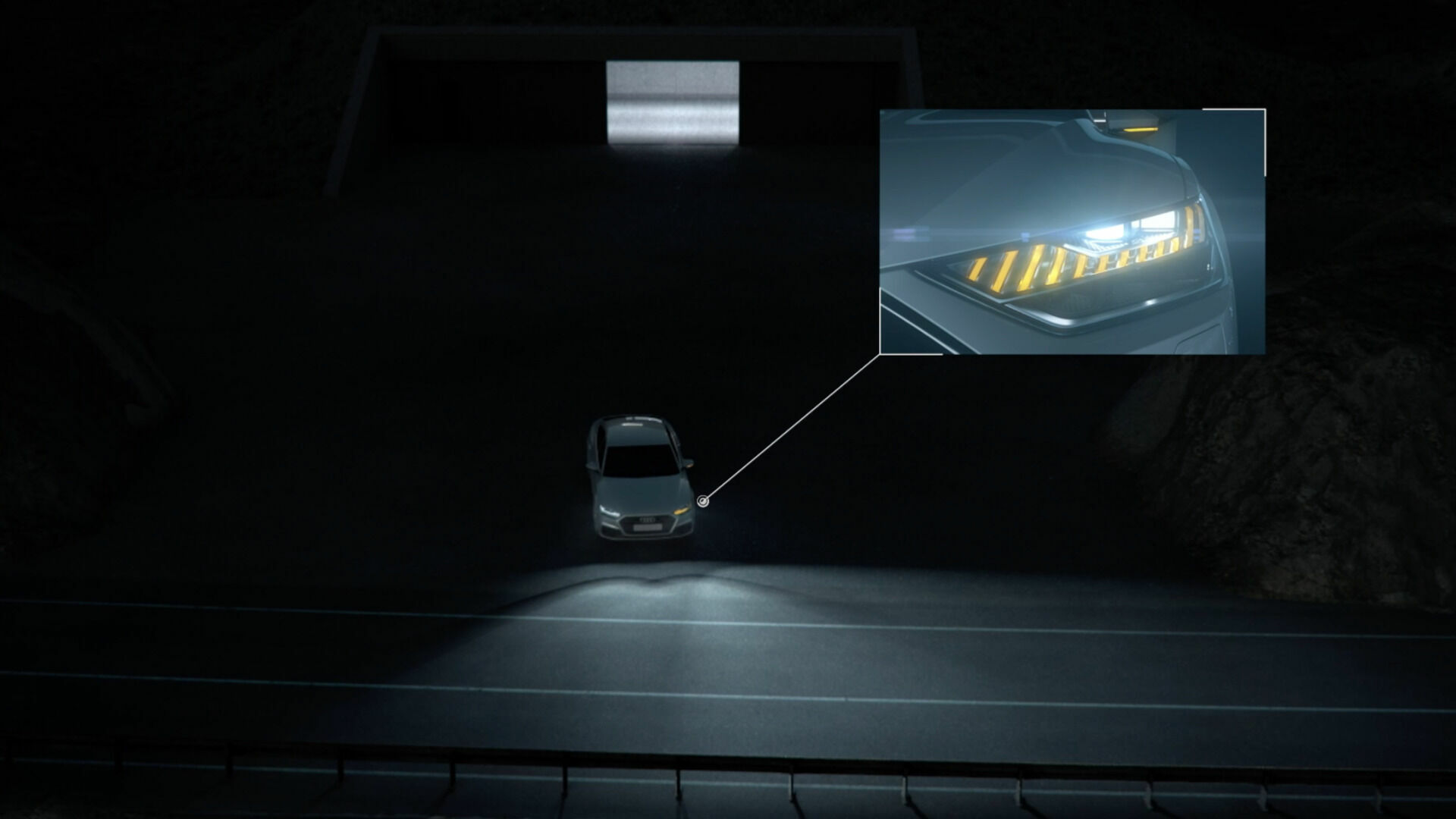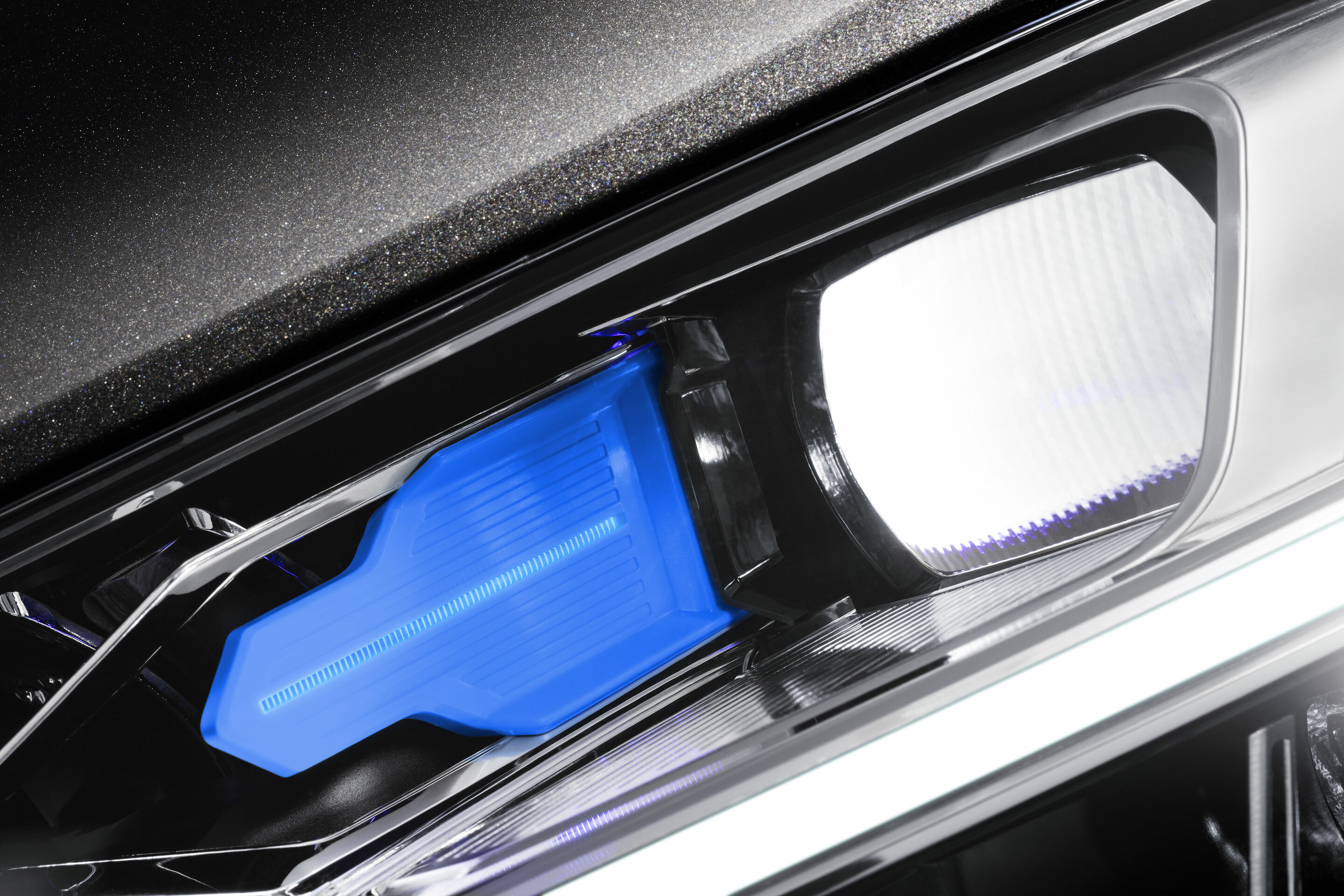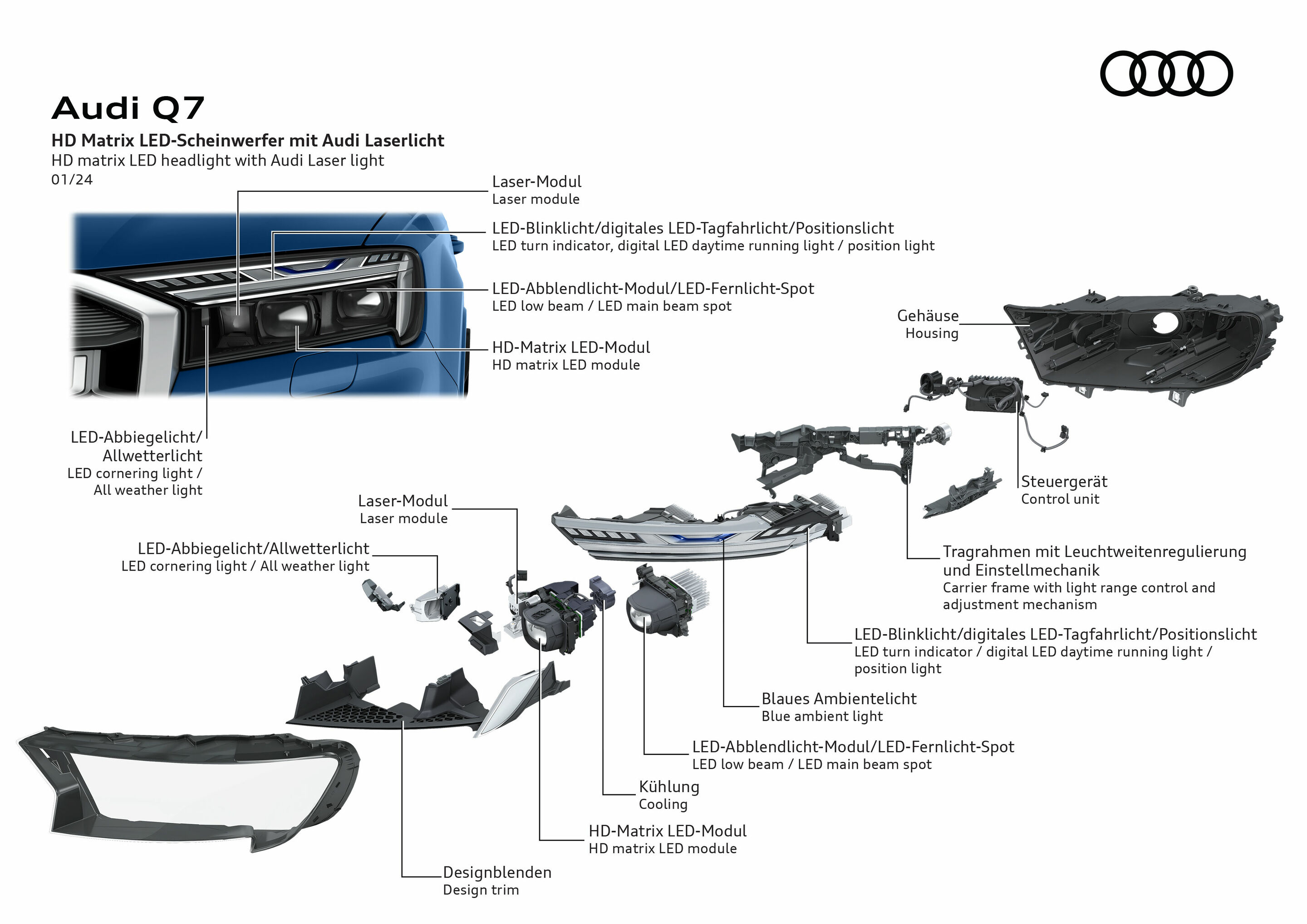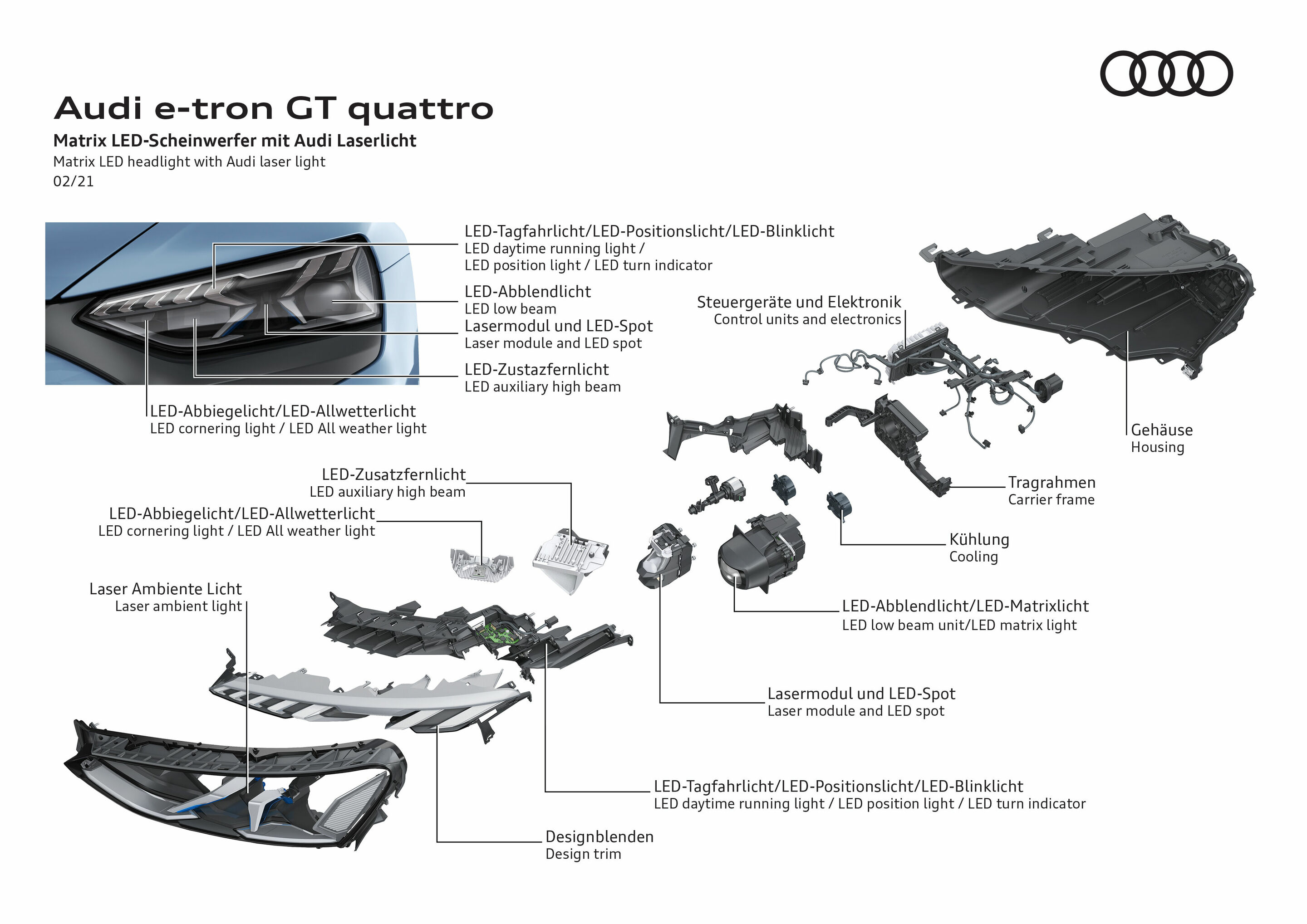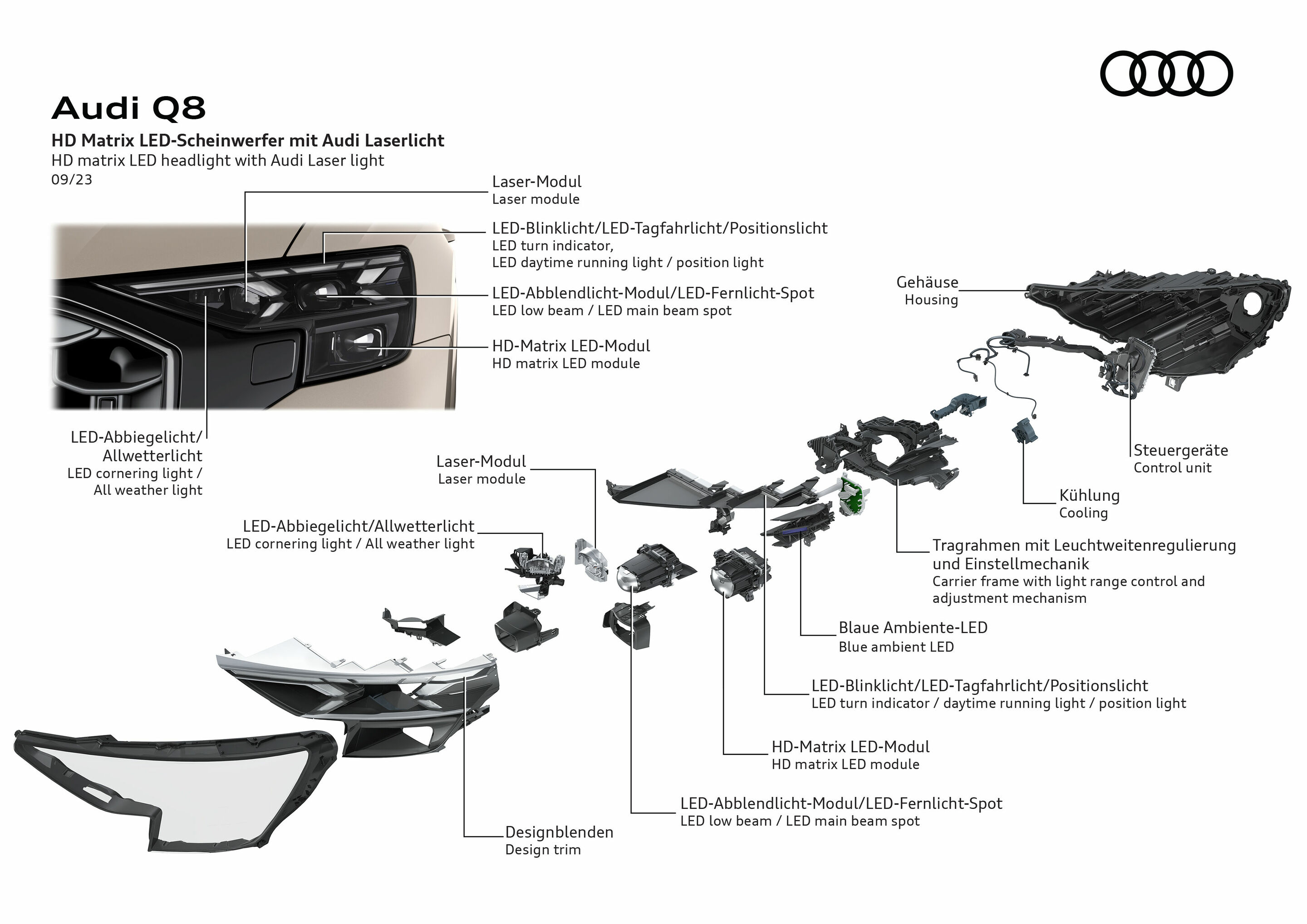Search
All search results for "Audi Laserlicht"
(92)
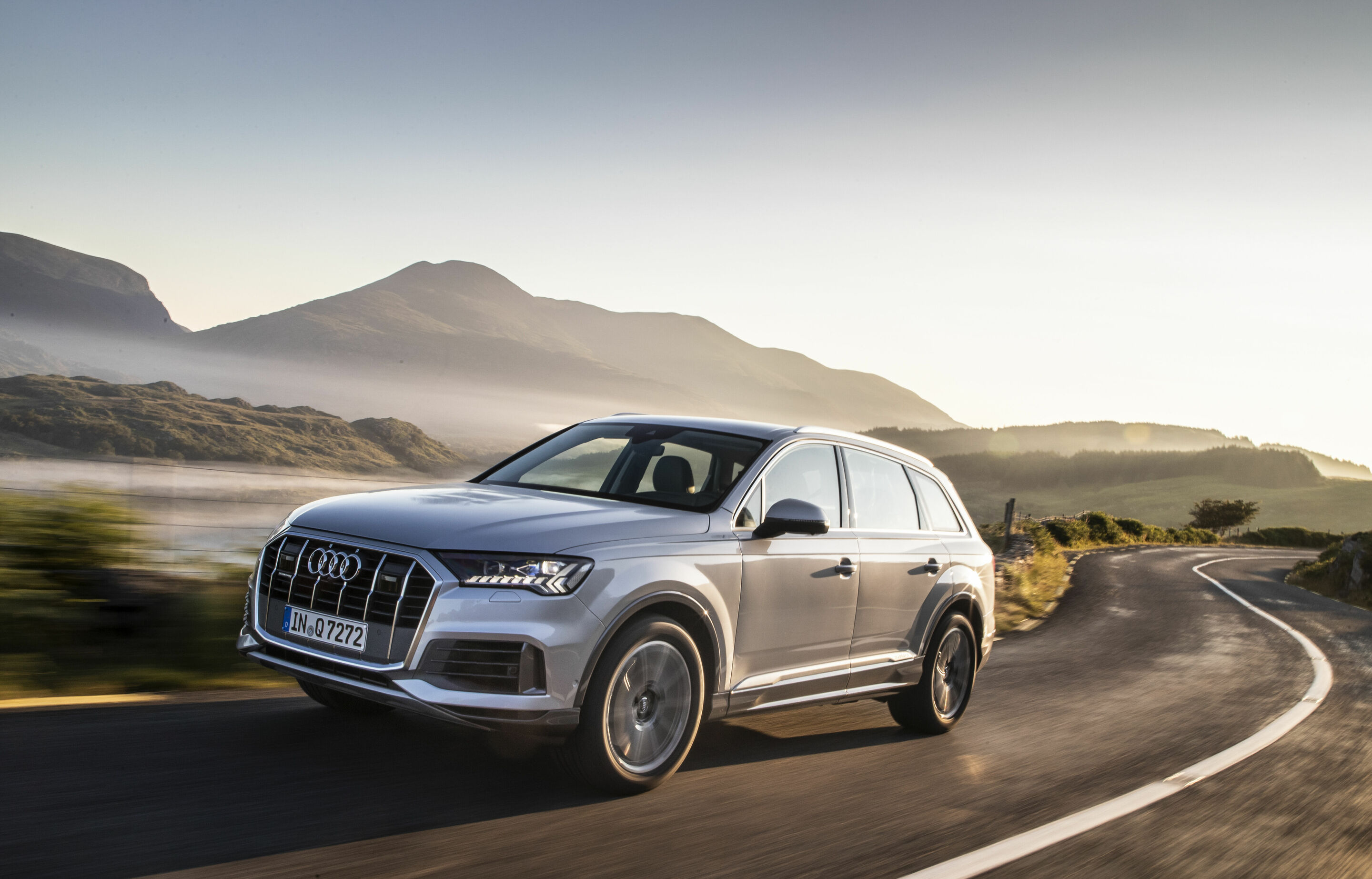
Audi Q7 / Audi SQ7 (until 2023)
The Audi Q7 is getting an all-round update – both visually and technically. The large SUV features the new design of the Q family and offers superb dynamics and excellent comfort, in addition to its superior spaciousness. Mild hybrid technology, the digital operating concept and the optional HD Matrix LED headlights including laser light are just some of its highlights.
Pictures
Videos
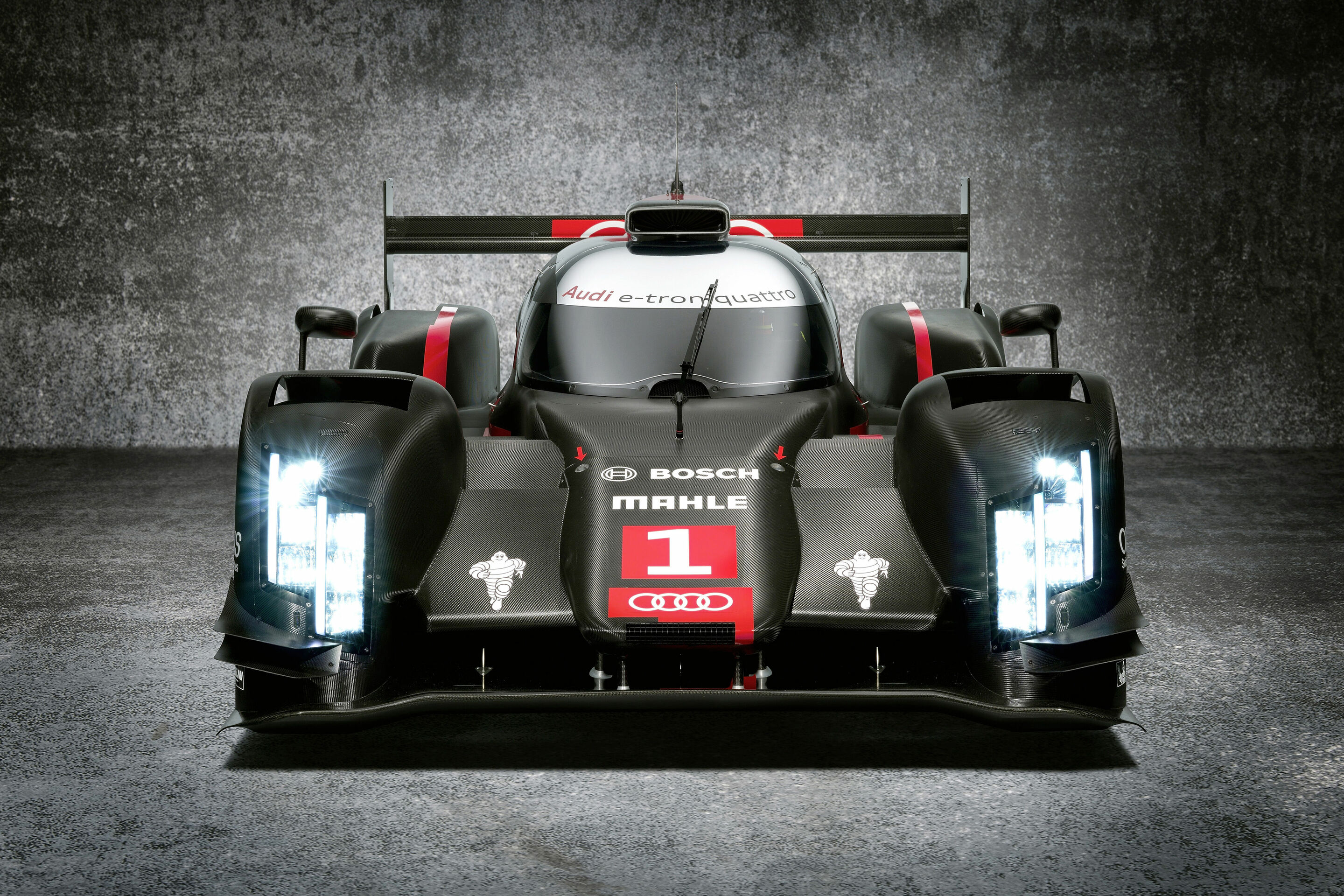 Audi R18 e-tron quattro with laser light
Audi R18 e-tron quattro with laser light
Audi brings new lighting technology to Le Mans WEC, DTM and GT sport in focus again in 2014 Development Board Member Dr. Hackenberg: “Motorsport accelerates our developments” Head of Sport Dr. Ullrich: “A year full of challenges is awaiting us”
At the world premiere of the new Audi R18 e-tron quattro, Audi unveiled another technical highlight of its new LMP1 sports car in Ingolstadt on Wednesday night. In 2014, the brand with the four rings will be running with laser light for the first time in the Le Mans 24 Hours and in the FIA World Endurance Championship (WEC).
“By using this new lighting technology Audi is setting yet another milestone at Le Mans,” said Dr. Ulrich Hackenberg, Member of the Management Board for Technical Development of AUDI AG, at the official presentation of the new R18 e-tron quattro that took place as part of the ‘Audi Sport Finale.’ Laser light will also open up completely new possibilities for our production models in the future. Once more, motorsport at Audi accelerates a new technical development for our customers.” The innovative laser light, which about 500 guests in attendance at the ‘Audi Sport Finale’ had the chance to experience live for the first time, complements the main LED headlights of the new Audi R18 e-tron quattro. A blue laser beam backlights a yellow phosphorus crystal lens through which the light beam is then emitted. This new light source provides even more homogenous lighting of the road. Laser light just one of numerous innovations of the new R18 “The new laser light is just one of numerous technical innovations featured by our new R18,” said Head of Audi Motorsport Dr. Wolfgang Ullrich, who was recognized by Dr. Ulrich Hackenberg on Wednesday night on the occasion of his 20th anniversary at the helm of Audi Sport. “We’re not going to reveal any more than that at this early stage, as in 2014 we’re facing an extremely tough competition and a year full of challenges for Audi Sport.”
 Audi and the long way to Le Mans
Audi and the long way to Le Mans
The key steps in the development of the new R18 Concept established back in July 2012 First track test in October 2013
On June 14/15, Audi will leave no stone unturned to continue its string of victories in the Le Mans 24 Hours. The new Audi R18 e-tron quattro the brand will be competing with is the most complex race car in Audi’s history. Chris Reinke, Head of LMP at Audi Sport, outlines the key milestones of the project.
July 2012: Shortly after our first hybrid victory at Le Mans, the concept of the new R18 e-tron quattro is established – even though the regulations have not been finalized at the time. October 2012: Initial tests in the wind tunnel – aerodynamics play a major role at Le Mans and have significant influence on the overall design of the car. December 2012: Start of the engineering design stage – the new Audi R18 e-tron quattro consists of over 4,200 single parts. Almost every one of them will be redesigned. Beginning of 2013: Decision that the new R18 will be running with laser light – a technology which Audi’s production development has been researching for years and in which it is ahead of the competition. March 2013: Production of the first components for the new R18, followed shortly afterwards by initial component tests on test rigs and the race track. June 2013: On the test day at Le Mans, we gather important data with the slimmer tires specified as of 2014 for our tire partner Michelin, using a fourth R18 with test driver Marco Bonanomi. There are no other testing opportunities available at the Le Mans race track. June 2013: Shortly before the race at Le Mans, the new V6 TDI engine for the 2014-specification R18 is run on the dyno in Neckarsulm for the first time July 2013: Start of the simulator tests – in parallel to the real-word race car, Audi continues to develop the virtual version of the R18. September 2013: Assembly of the first test prototype (chassis number 401).
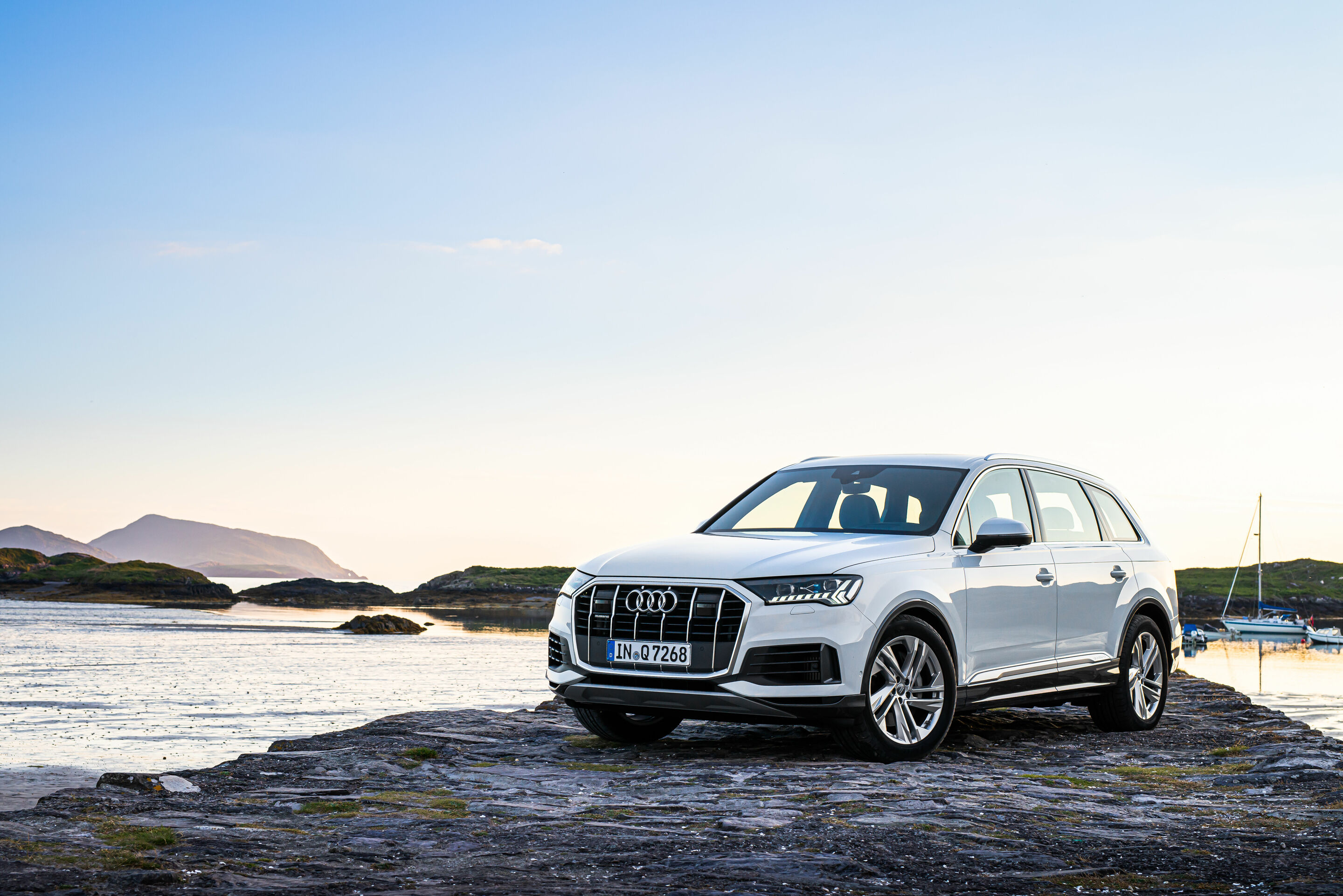
The second generation of the Audi Q7 has been on the market for four years. The brand is now equipping its largest SUV with a variety of visual and technical innovations. In addition to the powerful design, the Audi Q7 features HD matrix LED headlights including laser light, active roll stabilization, efficiency-increasing mild hybrid technology, and the digital operating concept MMI touch response. As the top model of its product line, the Audi SQ7 with its powerful V8 diesel presents itself in a new form. It will be introduced to the European market in mid-September. The base price for the Audi Q7 in Germany will be EUR 66,900.
Combined fuel consumption l/100 km: 9.1 – 6.6; combined CO2 emissions in g/km: 208 – 174
Information on fuel consumption and CO2 emissions as well as efficiency classes in ranges depending on the tires and alloy wheel rims used.
Audi Q7
Audi SQ7 TDI
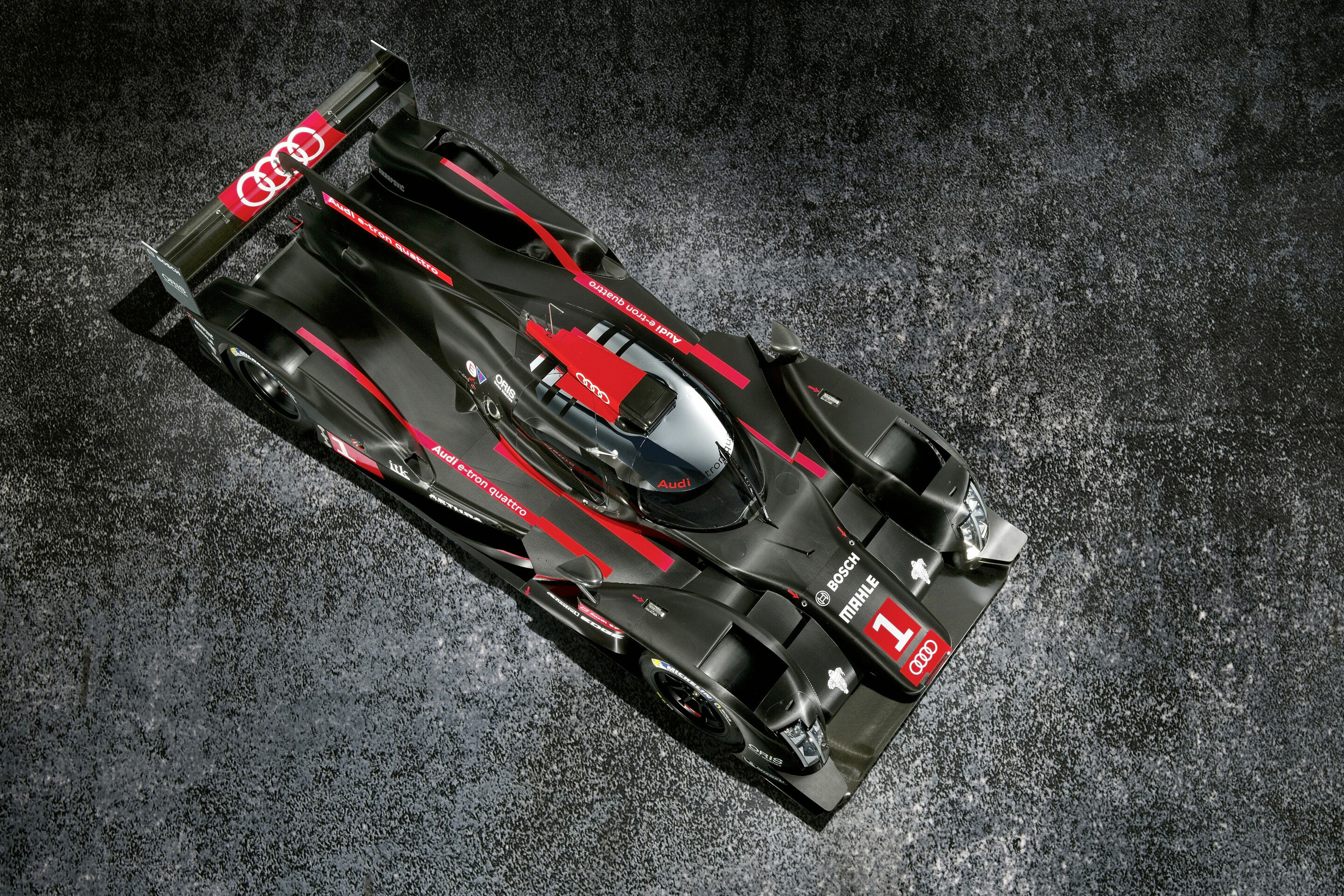 Audi as trendsetter at Le Mans
Audi as trendsetter at Le Mans
Hackenberg: “Le Mans is a unique test laboratory for new technologies”
For 15 years, Audi has been demonstrating ‘Vorsprung durch Technik’ in the world’s toughest endurance race. With the latest generation of the R18 e-tron quattro hybrid race car Audi continues its string of technical innovations at the Le Mans 24 Hours.
In 152 days from now, on June 14, the 82nd running of the French endurance classic will start at 3 p.m. Interest in the event is already exceptionally high. For the first time, Audi and Porsche, the race’s two most successful brands, will be pitted against each other. Toyota, after suffering two defeats against Audi, is aiming to break the four rings’ string of victory at Le Mans. Plus, for the first time, new regulations with a main focus on energy efficiency will be in effect – for Audi, the inventor of the TDI, this will provide an opportunity to again prove its great technical expertise not only on the road but on the race track. Be it with the engine, hybrid drive, lightweight design, or by setting standards in active and passive safety: Audi’s Le Mans prototypes are front runners in terms of sporting performance as well as technology. “Le Mans is a unique test laboratory for our technologies,” says Prof. Dr. Ulrich Hackenberg, who is responsible for Technical Development on the Board of Management of AUDI AG. “The comprehensive range of new technical developments of our current Le Mans race car includes the headlights with laser light. They illuminate the track for a distance of up to 800 meters. In a planned derivation for production vehicles, they achieve up to 500 meters, which is twice the range of LED headlights. With that, Audi is making an important contribution to safety on the track and in road traffic.” Advanced engine technologies for maximum efficiency In 2001, an innovative V8 engine powered the Audi R8.
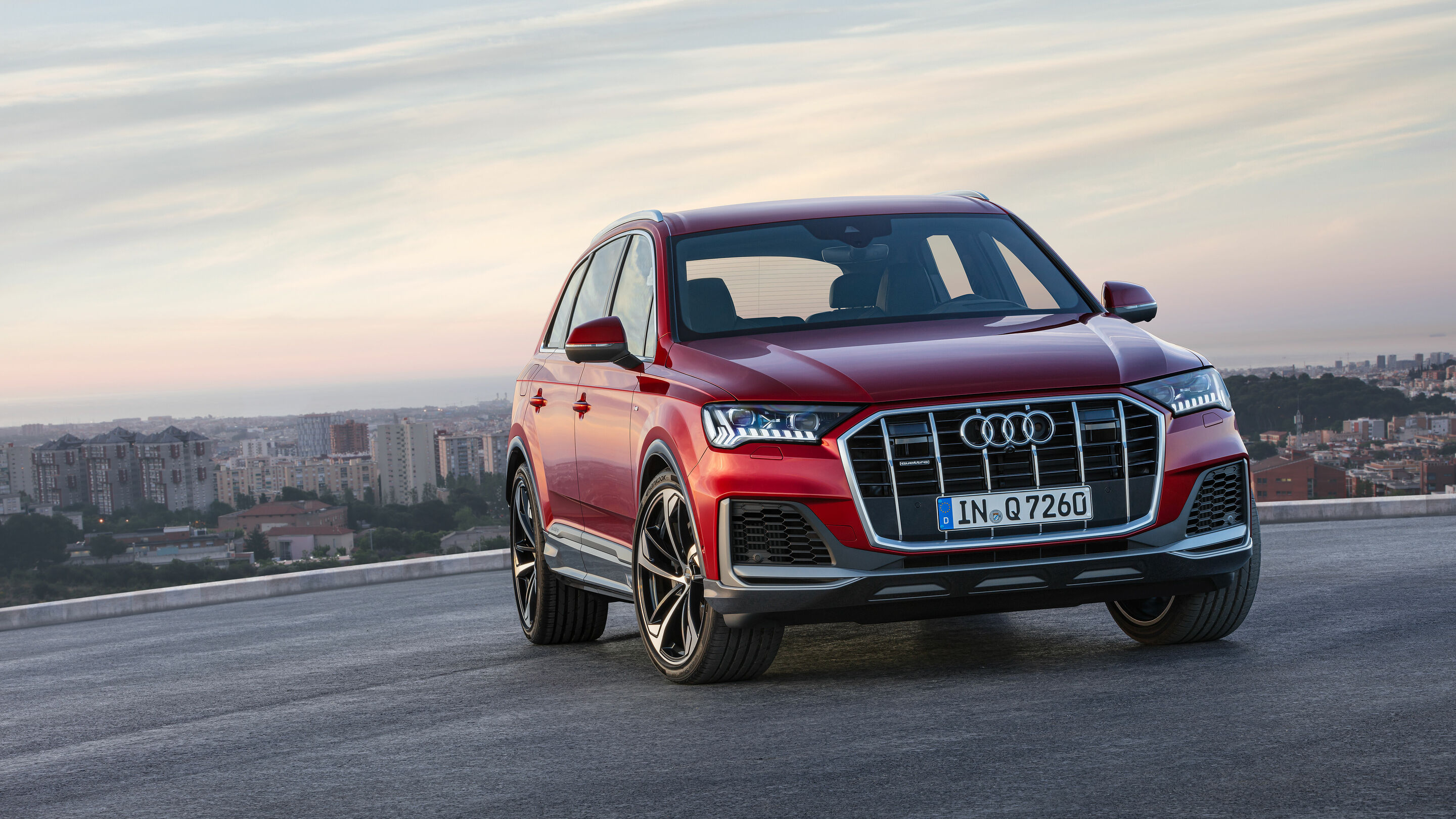
More powerful: new design with clear SUV characteristics and prestige factor More dynamic: active roll stabilization, air suspension and all-wheel steering More cutting edge: touch operating concept, HD Matrix laser light and 48-volt mild hybridThe Audi Q7 is getting an all-round update – both visually and technically. The large SUV features the new design of the Q family and offers superb dynamics and excellent comfort, in addition to its superior spaciousness. HD Matrix LED headlights including laser light, the mild hybrid technology and the digital operating concept are just some of its highlights. The new Audi Q7 will be launched in Europe in mid September. Prices in Germany start at 66,900 euros.
Robust look: the exterior design The Audi Q7 demonstrates the hallmark SUV elements of the current design language. It bears the large octagon-shaped Singleframe, with six upright slats providing the structure. As such, the SUV looks even more powerful. The two-part side air inlets have a much more expressive line, just like the sill area that underscores the large SUV’s ground clearance and, in turn, its offroad capabilities. The headlights, optionally in HD Matrix LED technology with Audi laser light, emphasize with their contour and light signature the width of the full-size model. On the restyled rear, a striking chrome strip creates the visual connection between the flat rear lights with their technical-looking graphics and carries forward the horizontal body line. The designers achieved the clear view with taut, flat surfaces, which span the entire width particularly in the license plate region.
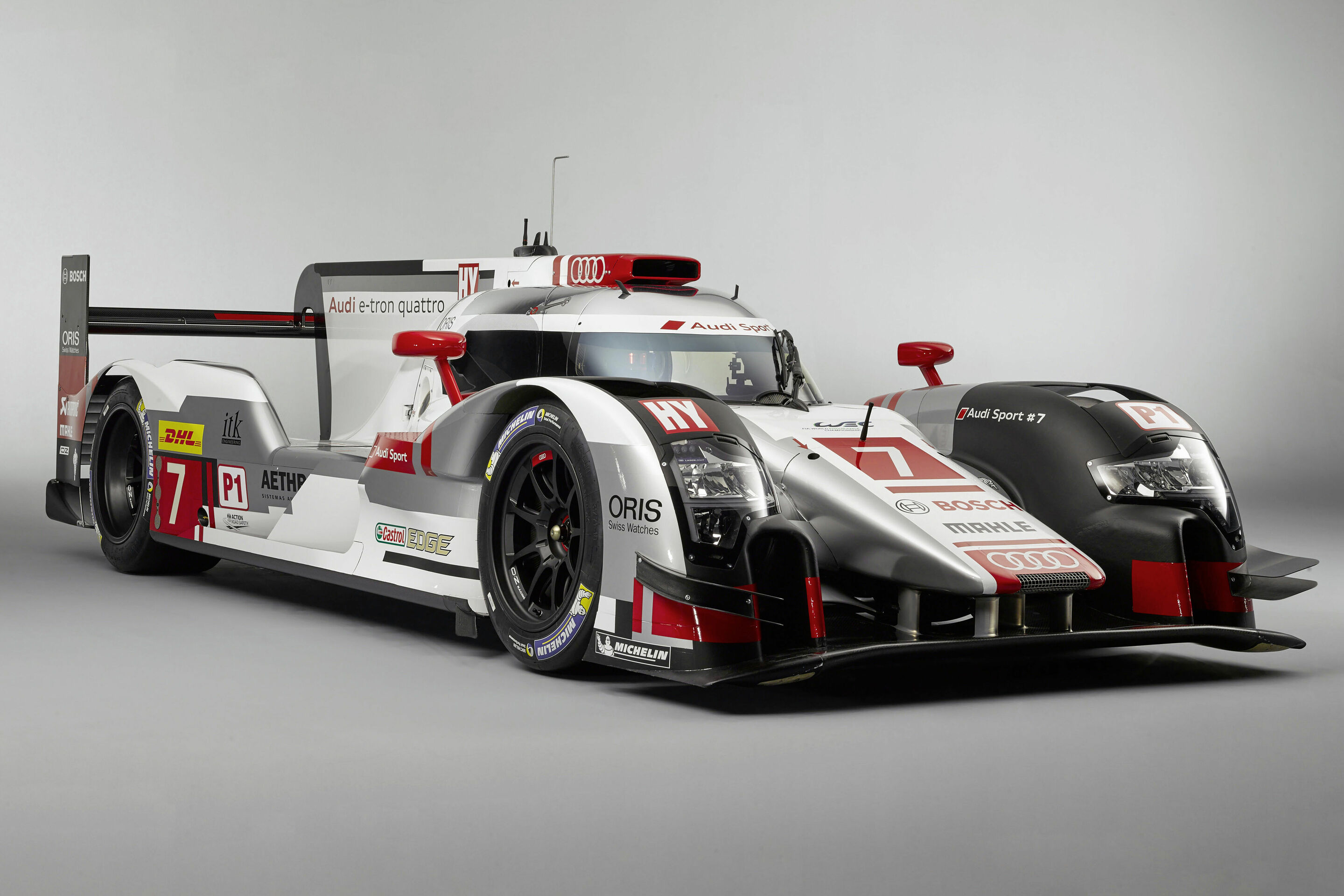 New Audi R18 e-tron quattro even more efficient
New Audi R18 e-tron quattro even more efficient
Aerodynamics, hybrid drive and many other details improved Efficient TDI engine consumes even less fuel than before Technologies from Le Mans winning cars now in production at Audi
Audi is starting the 2015 season with a thoroughly revised R18 e-tron quattro. In the FIA World Endurance Championship (WEC) and in the Le Mans 24 Hours as the season’s pinnacle event, Audi is going to compete with a hybrid sports car in the 4-megajoule class.
A twofold quantity of hybrid energy, fundamentally revised aerodynamics, the next step in lightweight design and a lot of detailed work characterize the fifth generation of the Audi R18. “The possibilities of the revolutionary regulations that have been in effect for LMP sports cars since 2014 are far from having been fully used. The rules harbor so much potential that there is room for future developments,” says Jörg Zander, Audi Sport’s new Head of Engineering. “We expect that the technological progress resulting from the fierce competitive pressure exerted by four automobile manufacturers that are now involved will significantly improve lap times this season – while concurrently reducing fuel consumption.” The new R18 e-tron quattro visually differs clearly from its predecessor even though its basic structure is closely akin to the previous model. The fresh look results from a new way of conducting airflow around and through the front end, in the area of the sidepods and at the rear of the LMP1 prototype. Large air inlets in the front wheel arches reduce aerodynamic drag of the body and have led to an all-new design of the headlights. The lighting units feature Matrix LED technology combined with Audi Laserlight – two innovations that improve active safety in road traffic and that Audi customers can now order for their production models as well. While Audi has adopted the monocoque – the central safety cell of the race car – from the previous model, the hood with the front wing and wheel arches features a new design.
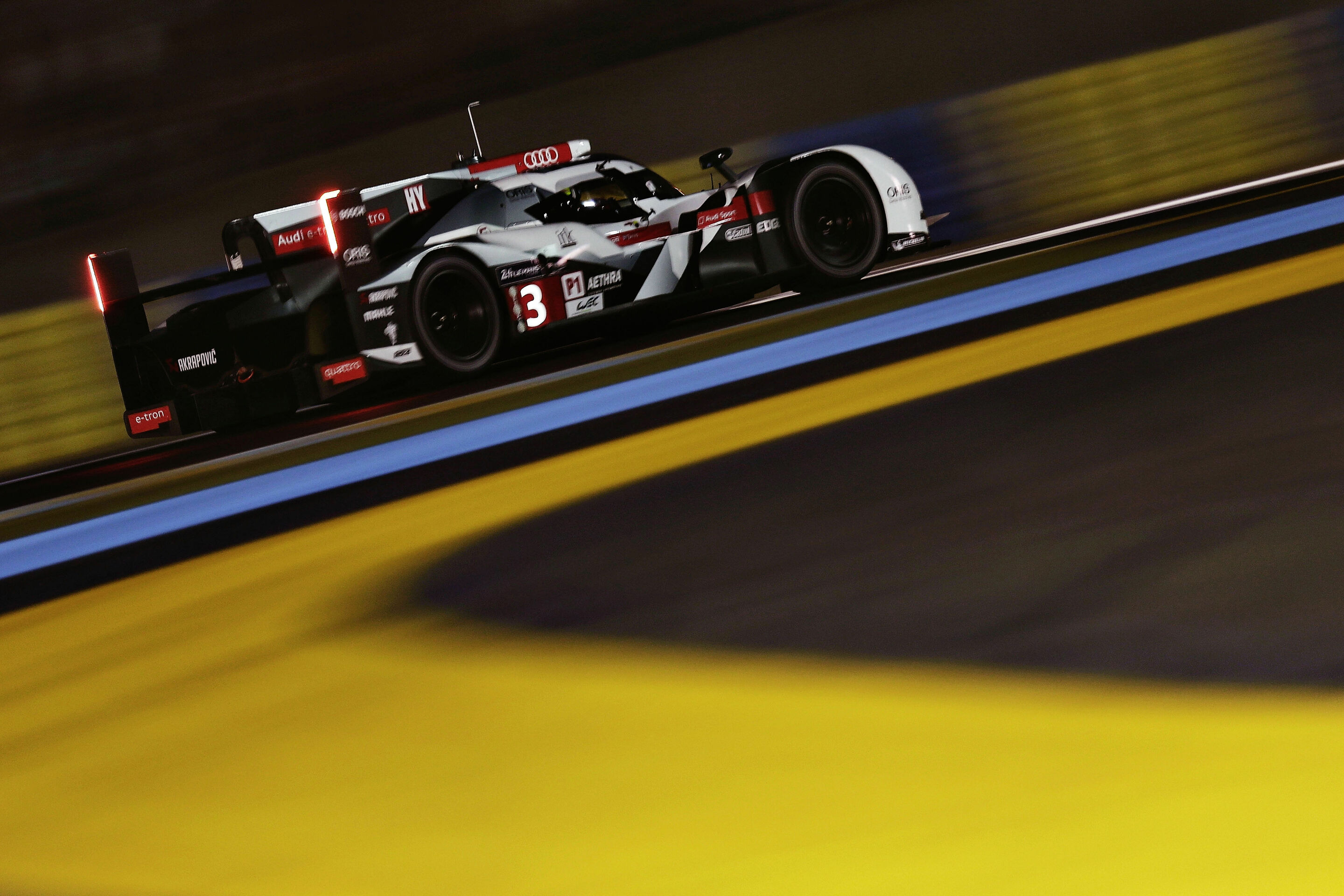 Audi wins race before the race
Audi wins race before the race
Le Mans: No. 1 Audi R18 e-tron quattro ready to run again Audi in grid positions five, six and seven Loïc Duval released from hospital
Audi has won a ‘race before the race’ in the Le Mans 24 Hours. Following the serious accident on Wednesday, the mechanics of Audi Sport Team Joest managed to prepare the #1 Audi R18 e-tron quattro from scratch again in record time overnight – a feat that caused a sensation around the world.
Before the first qualifying session on Wednesday night was over, Audi Sport Team Joest began to assemble a new Audi R18 e-tron quattro on the base of a spare monocoque. The spectators and members of the media at Le Mans could hardly believe their eyes when three Audi R18 e-tron quattro cars were standing in the pits again on Thursday night. In the afternoon, the R18 passed Technical Scrutineering and car number ‘1’ was ready to run again in time for the second qualifying session on Thursday night. A defective sensor and guard rail contact by Lucas di Grassi caused further minor setbacks in the second qualifying session. But in the final third qualifying, which was extended to 2.30 hours, the newly prepared Audi R18 e-tron quattro was running without the slightest problem late on Thursday night. There is good news for the fans of Loïc Duval too. On Thursday, the Frenchman was released from the hospital where he had spent the night under observation as a precaution. The Frenchman briefly visited his team and team-mates in the paddock before heading home to Geneva together with his father in order to recover from the consequences of the accident for the next few days. Loïc Duval’s name will continue to be present on the #1 Audi R18 e-tron quattro at Le Mans. His place in the cockpit was taken over by the Spaniard Marc Gené. Together with Lucas di Grassi and Le Mans record winner Tom Kristensen, Gené will start the race from grid position seven. The fastest time of car #1 was achieved by di Grassi in 3m 25.814s.
